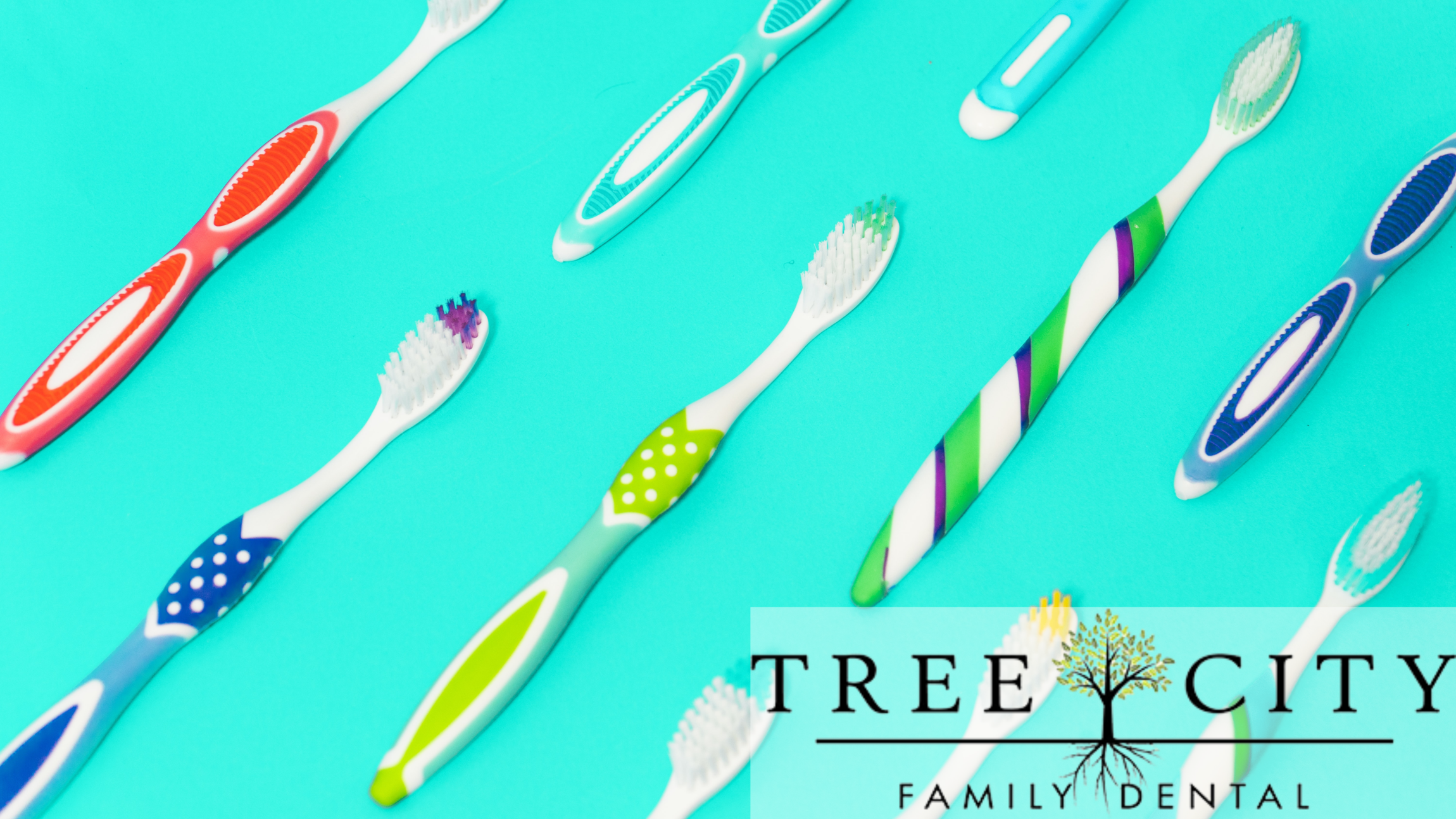Did you know that October is National Dental Hygiene Month? This year we’re celebrating by practicing perfect dental hygiene and spreading the importance of oral health. Having fresh breath, strong teeth, and healthy gums are all signs of good oral health, do you have them?
It may seem daunting to have to fight off the billions of bacteria living in your mouth, and it might be scary to realize that those bacteria can easily cause tooth decay. But don’t worry too much, it’s quite simple to take care of your teeth! Simply follow our tips below and soon you’ll be practicing perfect dental hygiene and showing off a picture-perfect smile!
Brush Your Teeth
This is probably the most obvious tip on our list. Of course, you need to brush your teeth in order to have good oral health! But even if we’re brushing our teeth well, we may be forgetting some brushing basics!
Brush Twice a Day
You should make a habit of brushing your teeth at least twice a day – when you wake up and before you go to bed. Spend at least 2 minutes brushing your teeth, and don’t forget to brush your tongue! If you have just consumed something acidic like oranges or soda, make sure you wait approximately 30 minutes before brushing your teeth. The acidity can soften your enamel and brushing too soon may cause damage.
Technique Matters
Brush your teeth at a slight angle and aim for the area where your tooth meets your gums. Move the toothbrush in a circular motion, making sure to hit every side of your tooth. Make sure to not push down too hard on your teeth, you don’t want to hurt your gums.
Get a Good Toothpaste
Fluoride toothpastes fight tooth decay and infections. Many brands will also add a whitening or plaque control aspect to this type of toothpaste.
If you know that your mouth produces an excessive amount of plaque, tartar control toothpastes may be the right choice for you. Tartar control helps to fight off plaque, bad breath, and disease.
Whitening toothpaste is used for removing stains on teeth. These toothpastes contain whiteners and abrasive materials that scrub your teeth and provide a protective coating to prevent future staining.
Sensitivity removal toothpaste contains potassium nitrate used to remove the sensations that result due to sensitivity. It will let you get back to eating your favorite foods without suffering from pain.
Toothpaste for gum disease is used by patients who have been diagnosed with gum disease. This special toothpaste will help fight against gum disease, plaque buildup, bleeding gums, and more.
Non-fluoride toothpaste is beneficial for young children who frequently ingest toothpaste.
Replace Your Toothbrush
If your toothbrush gets worn down it won’t be able to do the job properly, so it’s important to know when to switch out your brush. In general, you should replace your toothbrush or electric toothbrush head every 3 months. If you notice the bristles becoming worn out or discolored, then you should change it.
Floss Between Your Teeth
Flossing is right up next to brushing in terms of importance. Flossing between your teeth helps you to clean areas that your toothbrush has a hard time getting into.
Practice Proper Techniques
Break off about 18in of floss and wrap it around your middle fingers, make sure to hold the floss taunt between your thumbs and forefingers. Insert the floss between your teeth using a gentle back and forth motion. When you hit your gums, curve the floss in the direction of one tooth and gently move toward the top of the tooth. Gently move the floss away from the tooth using an up and down motion. Repeat the flossing process for the rest of your teeth.
Floss Regularly
Make sure you’re flossing your teeth every day! If you find normal dental floss to be a bit unwieldy, try using a dental pick, pre-threaded flosser, water flosser, or a wooden or silicone wedge plaque remover.
Gargle, It’s Good for You
Using mouthwash is another great way to protect your mouth from harmful bacteria. Different types of mouthwash will do different things, so make sure you choose the right one for you.
Choosing a Mouthwash
Fluoride mouthwash contains sodium fluoride and can help protect your teeth from cavities and tooth decay. Fluoride is naturally found in toothpaste, tap water, and many different foods and too much fluoride can be bad for your health, so we suggest you be careful when using this type of mouthwash.
Antiseptic mouthwash is the most common type of mouthwash available. It typically contains alcohol and is used to stop bacterial growth or drive off halitosis. We recommend not overusing this mouthwash, as it could result in tooth discoloration.
Cosmetic mouthwash doesn’t directly help your teeth, but it is useful in fighting off bad breath. Think of it as the mint of the mouthwash world – helpful for a moment but not preventative in the long-run.
Natural mouthwash has the same functions as the other types of mouthwash, but it uses all natural ingredients. These mouthwashes are a popular substitute for traditional alcoholic mouthwashes.
Consult your dentist before choosing a mouthwash to make sure you’re getting the best one for you.
Proper dental hygiene also involves regularly seeing a dentist! If you need to book an appointment, contact us today! We’re ready to help you get your teeth as clean as can be!

